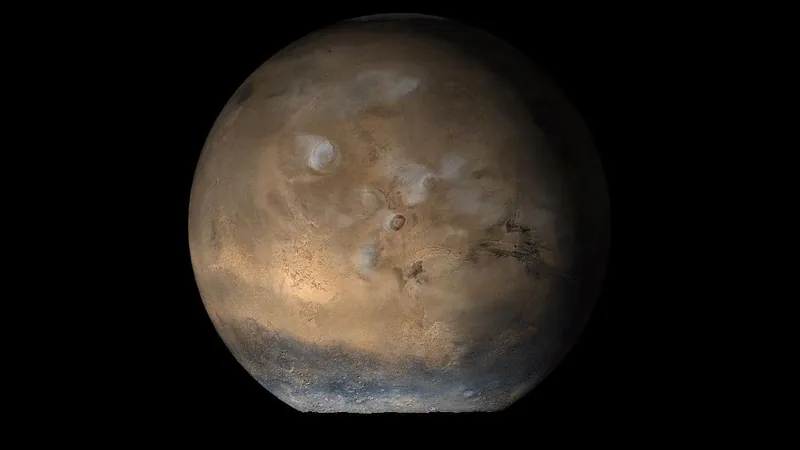
Prepare for the Spectacular! The Moon Will 'Swallow' Mars on January 13 — Don't Miss It!
2025-01-08
Author: Li
Mark your calendars, stargazers!
On January 13, 2025, get ready for an extraordinary astronomical event: a lunar occultation where the moon will momentarily hide Mars. This fascinating spectacle allows viewers to witness the red planet disappear behind the moon, creating a spectacular scene that is not to be missed.
Coinciding with Mars reaching its closest point to Earth, known as opposition, this event promises to offer a breathtaking view of Mars at its brightest and largest. This rare occurrence is the only lunar occultation of Mars visible from the United States in the entire year, making it a unique opportunity for astronomy enthusiasts.
To optimize your viewing experience,
seek out a dark location away from urban light pollution, and give your eyes some time to adjust to the night sky. The lunar occultation can be observed across the contiguous United States, parts of Canada and Mexico, as well as certain regions in Western Africa. For precise viewing locations, a detailed map from In-the-Sky is available to guide you.
How to Watch the Moon 'Swallow' Mars
On January 13, the full moon will rise alongside Mars, with both celestial bodies appearing close together in the sky. Expect them to rise around 5 p.m. EST and set the following day at approximately 8 a.m. EST, though these times can vary by location.
At precisely 8:44 p.m. EST, the moon will start to obscure Mars, with the red planet reappearing from behind the moon's upper edge at 12:52 a.m. EST on January 14. If you want to catch the exact times for your area, you can find this information by checking online astronomy platforms.
While Mars can be seen with the naked eye—glowing brightly with a slight golden hue—using a pair of high-powered binoculars or a telescope will significantly enhance your experience. Observing this celestial interaction closely will allow you to see the Martian surface features, such as its northern polar ice cap and the intricate craters on the moon.
Speaking of Mars, did you know that Valles Marineris, the largest canyon in the solar system, is located there? Stretching about 1,900 miles long, 400 miles wide, and 5 miles deep, it dwarfs the Grand Canyon by tenfold in length and threefold in depth, showcasing the immense geological wonders of our neighboring planet.
Don't miss your chance to witness this stellar event!
The moon and Mars are putting on a show that could captivate observers of all ages and backgrounds. Grab your binoculars, set up your telescope, and enjoy this cosmic rendezvous!

 Brasil (PT)
Brasil (PT)
 Canada (EN)
Canada (EN)
 Chile (ES)
Chile (ES)
 Česko (CS)
Česko (CS)
 대한민국 (KO)
대한민국 (KO)
 España (ES)
España (ES)
 France (FR)
France (FR)
 Hong Kong (EN)
Hong Kong (EN)
 Italia (IT)
Italia (IT)
 日本 (JA)
日本 (JA)
 Magyarország (HU)
Magyarország (HU)
 Norge (NO)
Norge (NO)
 Polska (PL)
Polska (PL)
 Schweiz (DE)
Schweiz (DE)
 Singapore (EN)
Singapore (EN)
 Sverige (SV)
Sverige (SV)
 Suomi (FI)
Suomi (FI)
 Türkiye (TR)
Türkiye (TR)
 الإمارات العربية المتحدة (AR)
الإمارات العربية المتحدة (AR)